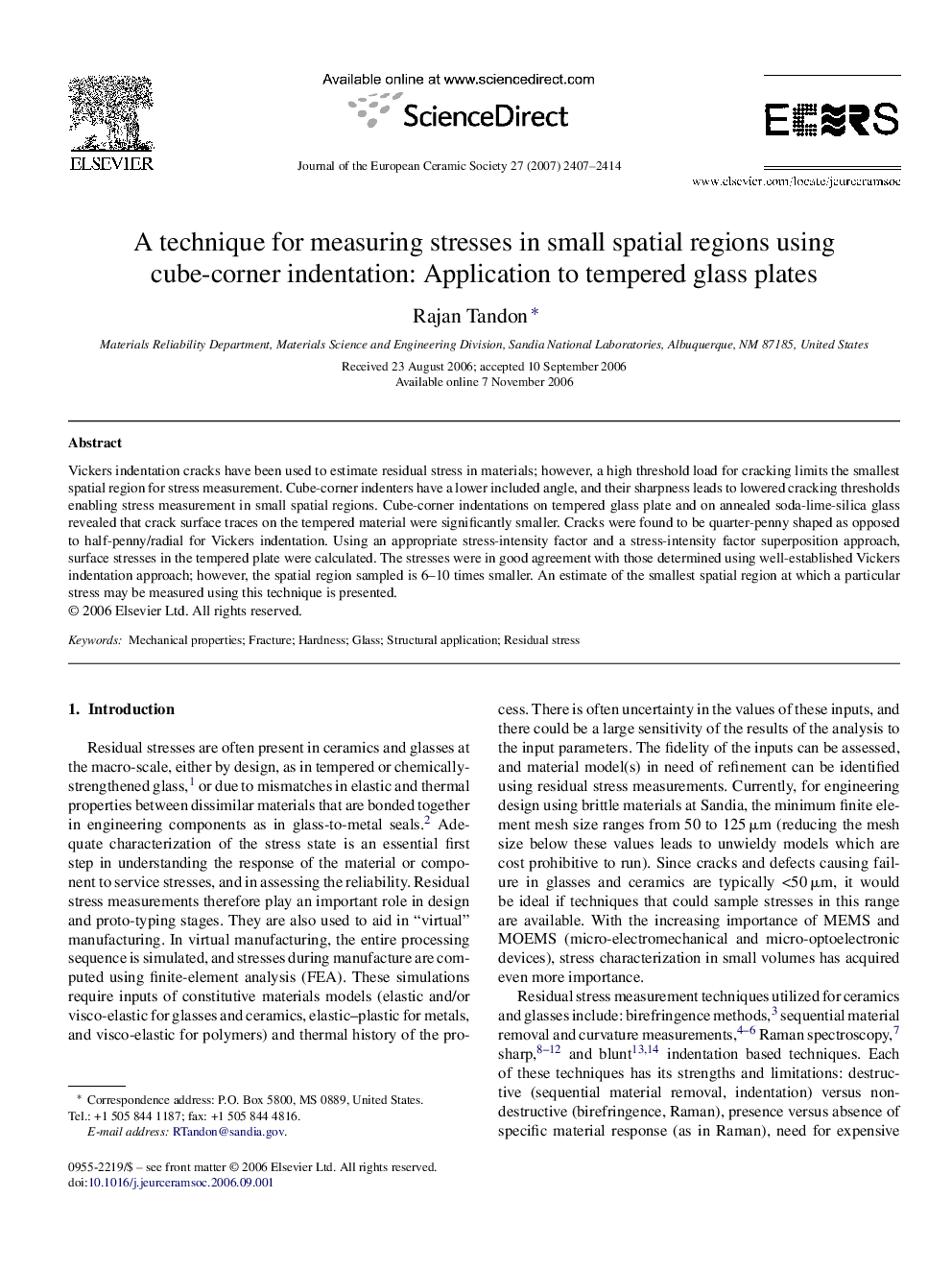| Article ID | Journal | Published Year | Pages | File Type |
|---|---|---|---|---|
| 1476803 | Journal of the European Ceramic Society | 2007 | 8 Pages |
Vickers indentation cracks have been used to estimate residual stress in materials; however, a high threshold load for cracking limits the smallest spatial region for stress measurement. Cube-corner indenters have a lower included angle, and their sharpness leads to lowered cracking thresholds enabling stress measurement in small spatial regions. Cube-corner indentations on tempered glass plate and on annealed soda-lime-silica glass revealed that crack surface traces on the tempered material were significantly smaller. Cracks were found to be quarter-penny shaped as opposed to half-penny/radial for Vickers indentation. Using an appropriate stress-intensity factor and a stress-intensity factor superposition approach, surface stresses in the tempered plate were calculated. The stresses were in good agreement with those determined using well-established Vickers indentation approach; however, the spatial region sampled is 6–10 times smaller. An estimate of the smallest spatial region at which a particular stress may be measured using this technique is presented.
